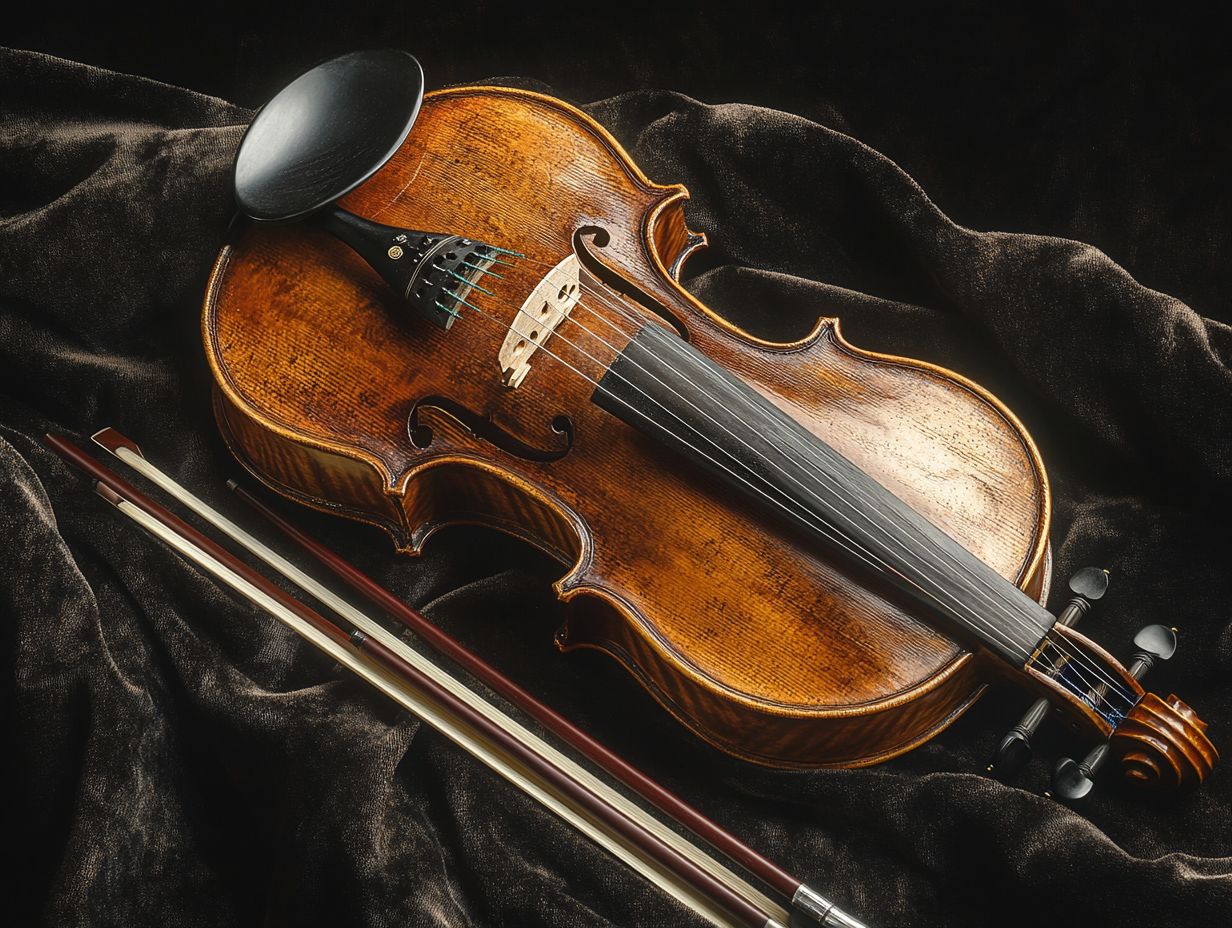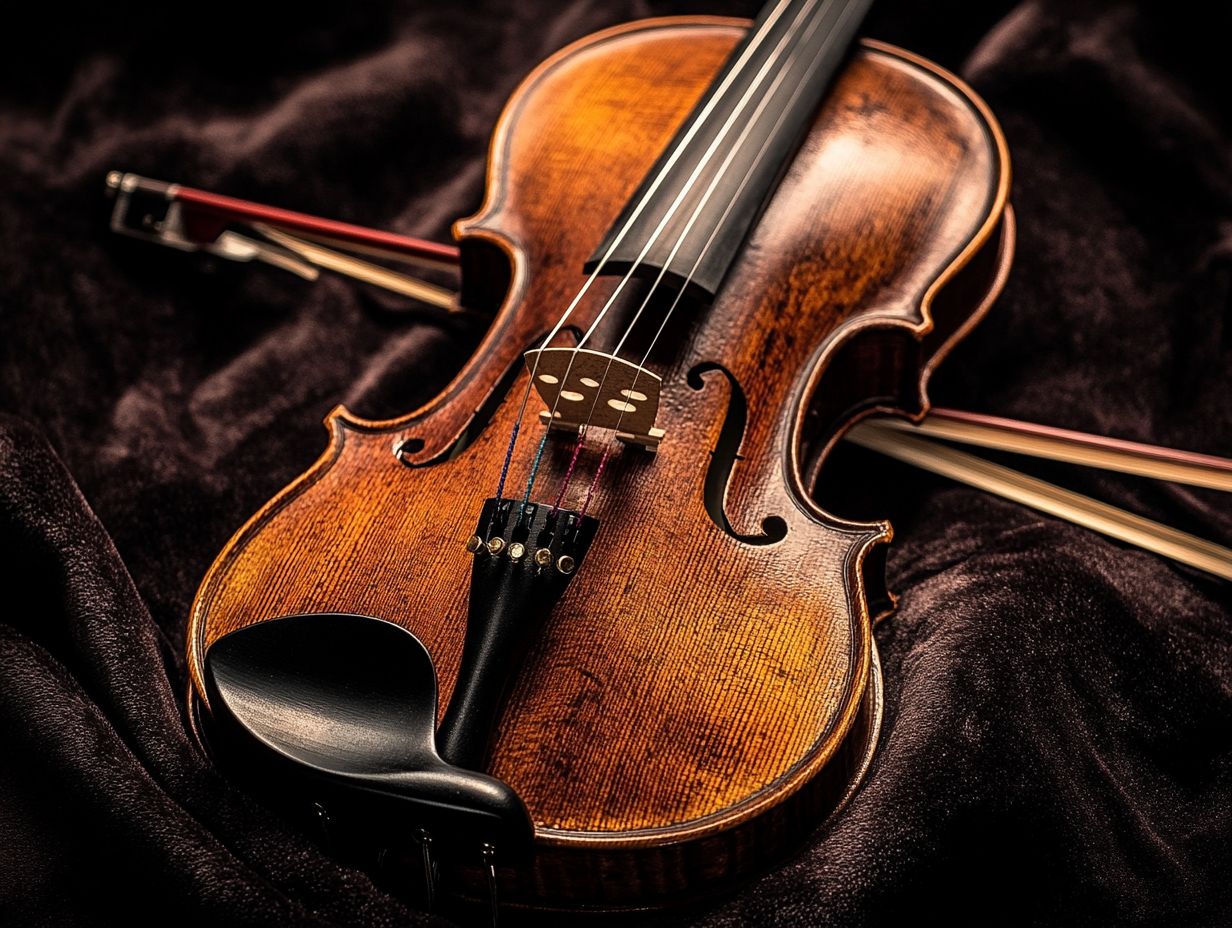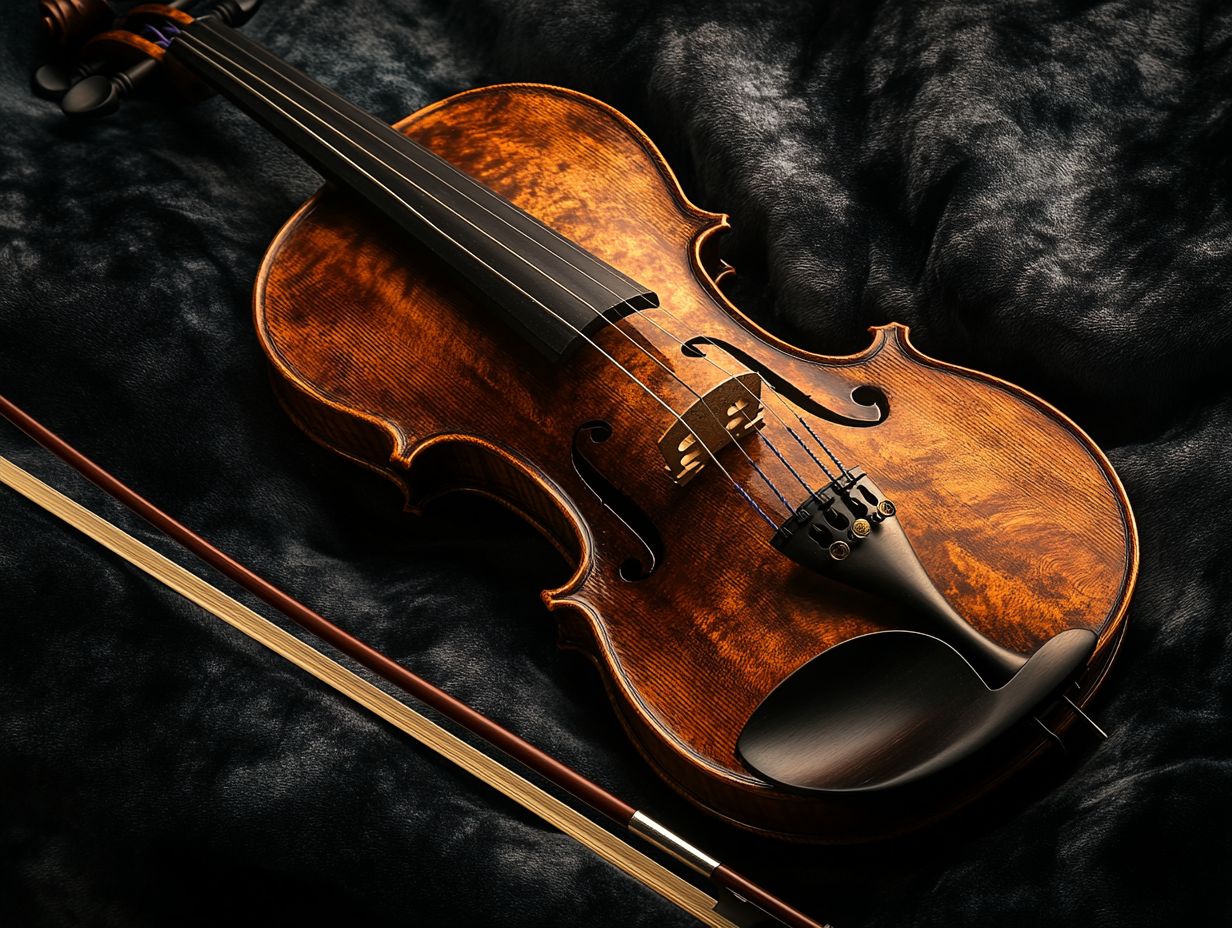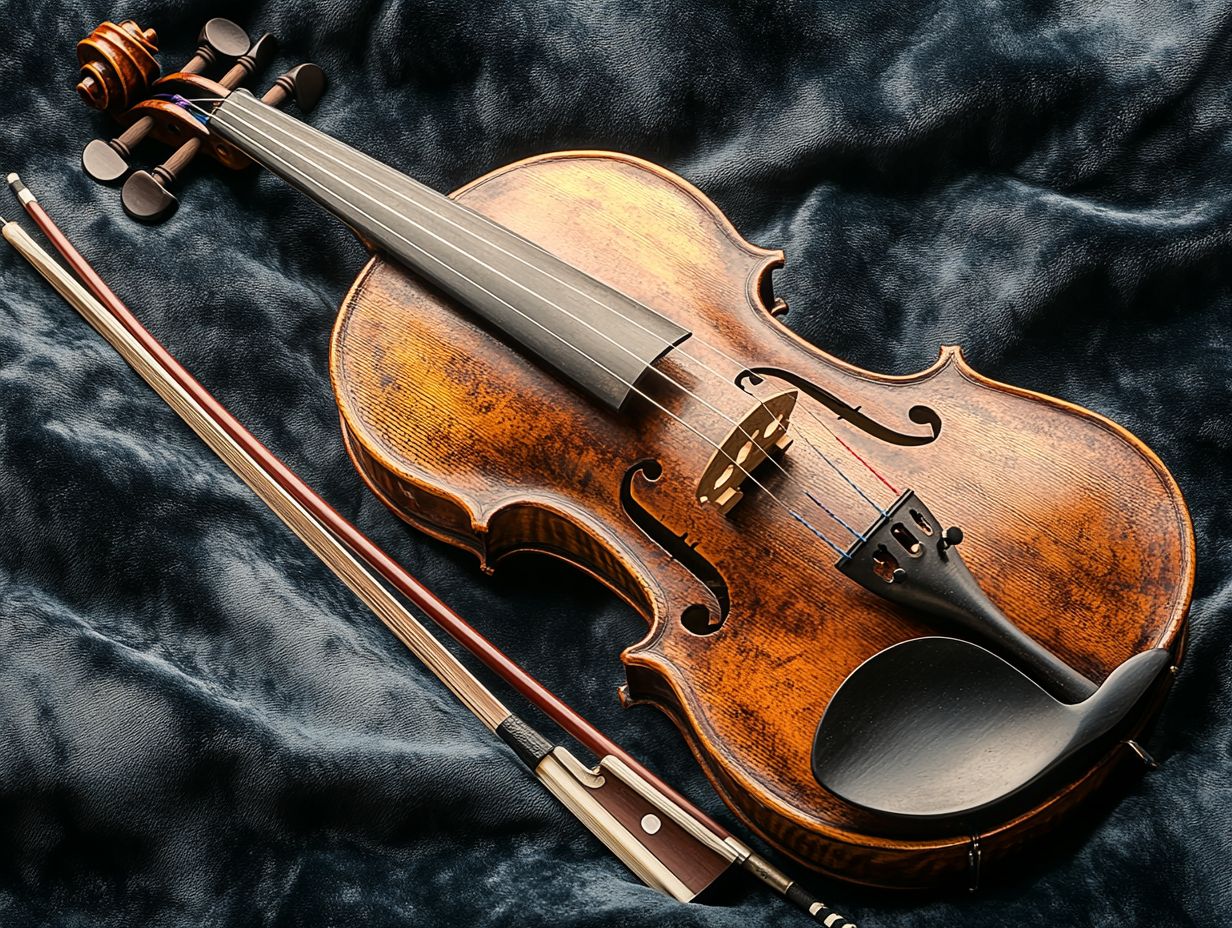String instruments have captivated audiences for centuries with their rich tones and emotional depth. This article delves into their fascinating history and evolution, with a particular focus on the violin, which is a cornerstone of classical music.
It breaks down the anatomy of the violin, examines the contributions of renowned composers and performers, and discusses the techniques that bring this instrument to life. Furthermore, it explores the unique challenges and rewards associated with mastering string instruments, highlighting their profound emotional impact.
Join us on this melodic journey!
Contents
The History of String Instruments

The history of string instruments dates back thousands of years. Their origins can be traced to ancient civilizations, and these instruments have become an integral part of modern orchestras.
The complexity and cultural significance of string instruments have shaped various musical traditions around the globe. Over time, string instruments have evolved dramatically, influenced by innovations in design and materials, such as wood and varnish, as well as the development of various bowing techniques.
These advancements have enhanced the sound quality and resonance of string instruments.
Origins and Evolution
The origins and evolution of string instruments are fascinating, as they intertwine craftsmanship with cultural development and reflect the progression of music across civilizations.
From the ancient lyres and harps of Mesopotamia to the earliest forms of the violin in the 16th century, the evolution of string instruments is a long and intricate journey, marked by remarkable innovations and cultural exchanges.
As societies evolved, so too did the artistry behind string instruments, with geography, available materials, and technological advancements all significantly influencing their design.
The introduction of new types of wood and the refinement of string-making techniques in Europe allowed the violin and its stringed relatives to flourish, resulting in a unique sound that has become synonymous with classical music.
Understanding these milestones not only deepens our appreciation of string instruments but also connects us to the vast tapestry of human history and artistry.
The Anatomy of a Violin
The anatomy of a violin consists of several essential parts that contribute to its sound, resonance, and overall structure. These components range from fundamental elements like the wooden materials and strings to more intricate factors such as varnish and bowing techniques.
Each part plays a crucial role in the violin’s anatomy and significantly impacts its performance.
Parts and Their Functions

The various components of a violin, including the body, neck, strings, and bow, play distinct roles that significantly influence sound quality and playability, highlighting the relationship between craftsmanship and musical performance.
- Body: The bridge supports the strings and transmits their vibrations to the body, which in turn affects tone and resonance. The soundpost provides structural support to the body and facilitates the transmission of vibrations from the top to the back. The F-holes allow sound to escape and influence internal air pressure, thereby affecting overall sound quality. Additionally, the shape and size of the body impact the instrument’s resonance and loudness.
- Neck: The scroll houses the pegs that are used to tune the violin. These pegs hold the strings taut and enable the musician to adjust the pitch by winding them tighter or loosening them. The nut separates the neck from the fingerboard and ensures that the strings are positioned at the correct height. The fingerboard is where the musician presses down on the strings to create different notes; the amount of pressure, position, and angle are crucial for producing the desired note quality and intonation. The endpin secures the tailpiece to the body of the violin.
- Strings: The strings are crafted from various materials, which influence sound quality, and they are tuned to different pitches, allowing musicians to create beautiful melodies. The tension on the strings affects both pitch and tone.
- Bow: The bow is essential for playing the violin, and the type of hair used impacts sound quality. Different bowing techniques involve varying pressure and angles, which affect the dynamics and timbre of the sound produced.
The Role of the Violin in Classical Music
The violin plays a crucial role in classical music, both in orchestras and as a solo instrument. Its unique sound and emotional depth enable it to support a vast repertoire that showcases a wide range of musical expressions, including melody, harmony, and dynamics.
Famous Violin Composers and Performers
The history of the violin has been significantly shaped by the musicality and virtuosity of various composers and performers who have enriched its legacy in classical music. Antonio Vivaldi, the first to use the term “violin concerto,” revolutionized violin technique by introducing challenging passages for the soloist and a diverse array of musical styles in his concertos.
In the 19th century, Niccolò Paganini emerged as one of the first violinists to emphasize the importance of showmanship. His technically complex compositions required exceptional dexterity and speed, accompanied by dramatic and expressive gestures that captivated audiences.
During the Romantic period, composers like Franz Schubert and Johannes Brahms expanded the emotional range of the violin repertoire. In the 20th century, composers such as Igor Stravinsky experimented with modern harmonic and rhythmic structures, creating new challenges for violinists.
The contributions of these musicians not only broadened the violin repertoire but also inspired a multitude of styles that continue to influence musicians today.
The Art of Playing the Violin

The art of playing the violin encompasses a diverse range of techniques and styles, requiring dedication and practice to master the instrument’s complexities and express its inherent beauty through music.
Key elements include bowing techniques that influence dynamics and phrasing, advanced finger techniques that enhance musicality, and fingering patterns that contribute to musical articulation and fluency.
Additionally, proper posture and hand positions play a crucial role in the overall virtuosity of the performer.
Techniques and Styles
The techniques and styles of violinists range from classical to modern, each offering unique means of expression and creativity that enable performers to emotionally engage with their audiences. Some of the most common techniques and styles of violin playing include the following:
- Pizzicato: This technique involves plucking the strings with the fingers instead of using the bow. Pizzicato creates a staccato and playful character in the music, adding a lively and rhythmic element that evokes excitement and joy.
- Legato: Legato refers to the technique of playing the violin in a smooth and connected manner, where each note flows seamlessly into the next without any breaks in sound. This technique is often employed in lyrical and expressive passages to create a singing quality that enhances the emotional impact of the music.
- Staccato: Characterized by short, detached notes with a crisp and punctuated sound, staccato creates a lively and energetic character in the music, contributing brightness and playfulness to the overall sound.
- Arco: In this technique, the violinist uses the bow to produce sound on the instrument. Arco is the most common and traditional method of playing the violin, allowing for a wide range of dynamics and expressiveness.
The various techniques and styles of violinists significantly influence the mood of a piece and create emotional space for the audience to experience the music. Additionally, different cultural backgrounds shape these techniques and styles, as composers and performers incorporate elements from their own cultural traditions into their music. This interplay highlights the value of studying music theory and pedagogy, which fosters a deeper understanding of the diverse techniques and styles across cultures.
The Complexity of String Instruments
The complexity of string instruments, particularly the violin, presents a unique set of challenges and rewards for musicians. Mastering these instruments requires a high level of musicianship and a deep understanding of various techniques to unlock their full potential.
This complexity is evident in the technical proficiency needed for performance dynamics, improvisation, and the emotional nuances that string instruments are capable of conveying.
Unique Challenges and Rewards

Playing the violin presents unique challenges, including the intricacies of tuning, maintaining technique, and mastering musical scales. While these aspects can be daunting, the rewards of creating beautiful music and connecting with audiences are unparalleled.
Many violinists face technical difficulties that can impede their progress, such as issues with finger placement and bowing technique, which require constant practice and a deep understanding of musicianship. Performance anxiety often adds another layer of complexity, making it even more challenging to share one’s artistry during concerts or competitions.
However, the satisfaction that comes from overcoming these obstacles is immense. The joy of musical expression not only fosters personal growth but also opens doors to enriching experiences in teaching and sharing knowledge with aspiring musicians, ultimately cultivating a sense of community and dedication to the art form.
The Beauty of String Instruments
String instruments, particularly the violin, are captivating not only for their visual appeal but also for the way their sounds evoke deep emotions and resonate with audiences.
This emotional connection is a significant aspect of the beauty of string instruments.
The Emotional Impact of Music
The emotional impact of music played on string instruments, particularly the violin, is profound, as it establishes a deep connection with audiences and allows for a variety of interpretations that reflect the artist’s own feelings and intentions.
The ability of music performance to convey such complex emotions highlights the artistry involved in the craft. Techniques like bowing styles, vibrato, and dynamics are employed not only to achieve optimal sound quality but also to personalize the music, enabling performers to express emotional nuances that words alone cannot capture.
The audience’s involvement is crucial in amplifying this effect; it is only when listeners are touched by the subtleties of a performance that they can fully share in the emotional experience.
This creates a feedback loop between the performer and the audience, enhancing the overall impact of the performance. Ultimately, this dynamic transforms the performance into a moment of shared emotional exposure and beauty, where feelings rise and fall in unison.
